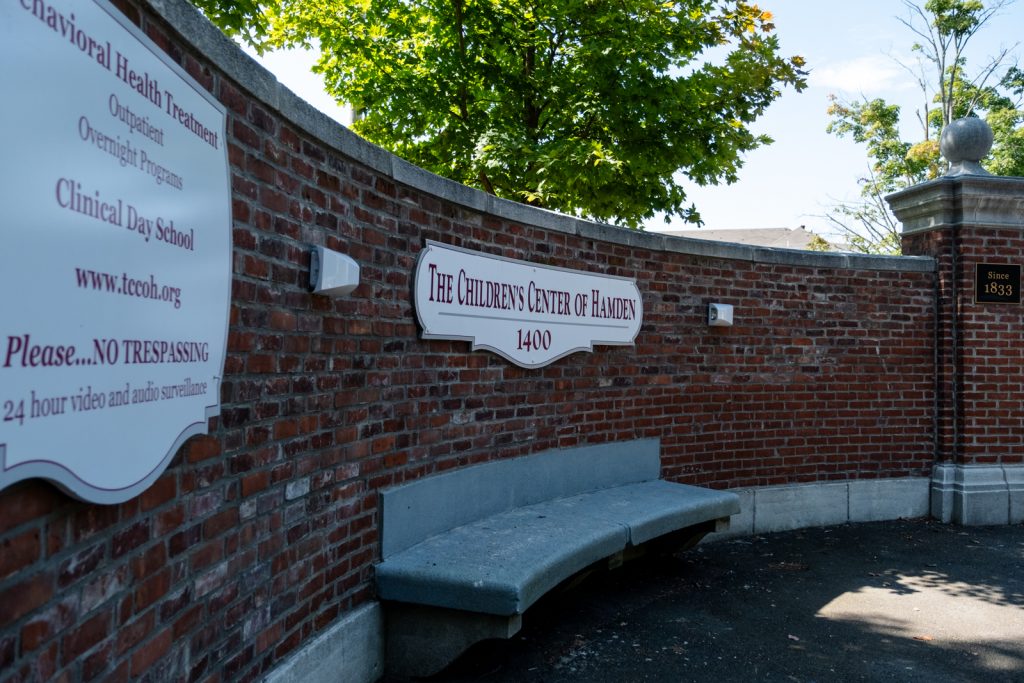The consequences of an underfunded and overstretched child mental health system can be devastating for Connecticut’s kids and families. The combination of children with serious psychiatric illness being treated by overburdened staff who may have been inadequately trained, supported, supervised, and compensated can contribute to abuse of some of the most vulnerable members of our community: children seeking care in residential facilities.
Like many in my town, I was sad and angry to learn of some examples in my own backyard, at the Children’s Center of Hamden. It is egregious that the public is only now becoming aware of these very serious concerns happening under our noses but behind locked doors. I urge legislators to work to ensure greater oversight of these facilities and increased transparency for the community when patterns of mistreatment are detected.
It is well understood by Connecticut’s mental health professionals that residential placements are scarce in our state, but we need to think about the mental healthcare system as a continuum of care. Most childhood psychiatric illness does not begin at a level of intensity requiring residential or inpatient treatment. It is essential to invest in universal programs that support children and families’ well-being by ensuring access to health care, high quality childcare and early education programs, paid family medical leave, and food and housing security starting in utero and continuing throughout childhood.
We must eradicate childhood poverty, including by passing a permanent, fully refundable Connecticut Child Tax Credit. (Note that the temporary 2021 federal expanded child tax credit, which was allowed to expire, dramatically reduced childhood poverty, particularly for children of color). We need to identify and fight the racism within each of these systems that also contributes to youth mental health difficulties for Black and brown children. This is not an exhaustive list of what must be done to support children and families. We have the power to do these things right here in Connecticut.
Lawmakers need to understand that investing in public education is a mental health intervention for children and families. Many children access mental health treatment at school due to the multiple barriers to accessing care outside of school. Children spend many hours each day at schools, which can either support their wellness or contribute to mental health difficulties.
Although some progress has been made with regard to the way that Connecticut funds our schools, the state has to do more to support districts with high percentages of children facing economic adversity, high levels of special education needs, and large numbers of multilingual learners. Overreliance on local property taxes to fund education budgets has led to dramatic inequities in public education funding. Lawmakers have the opportunity to correct these inequities, including by accelerating the Education Cost Sharing (ECS) model and expanding the Payment in Lieu of Taxes (PILOT) program.
We must also invest much more in outpatient care once children’s mental health issues have become apparent, with a focus on early intervention. Like most illnesses, child mental illness often gets worse when kids and families are languishing on lengthy waitlists. Further, early interventions delivered in innovative ways have been demonstrated to alleviate children’s suffering and reduce the need for longer-term treatment, including for children exposed to severe violence and sexual abuse.
However, Connecticut’s reimbursement rates for child mental health services are not competitive, contributing to staff turnover, difficulty recruiting and retaining a robust, well-qualified, and diverse mental health workforce, and increasing waitlists for outpatient treatment. I have personally spoken to dozens (hundreds now?) of friends and neighbors about their difficulties getting appropriate mental health care for their kids, because the national youth mental health crisis is also local.
When children cannot access lower levels of care early in the course of their mental illness, many go without treatment until/unless they are in crisis. In 2024, calls to 211, which allows Connecticut families to access mobile crisis providers, increased by one third over the prior year. Intensive, community-based treatment programs such as IICAPS, which are designed to prevent hospitalization, are similarly overwhelmed, meaning families on the brink have to wait for care or enter through the emergency department.
Of course, our emergency departments are not equipped to handle the surging numbers of children presenting for behavioral health crisis after lower levels of care have failed them. This cycle will continue unless we decide we want to seriously invest in children and families.
Connecticut’s legislature made major strides in 2022 to address increases in youth mental health issues exacerbated by the COVID-19 pandemic. We need to build on this foundation and continue working towards comprehensive child mental health care reform.
Many of these solutions require structural changes and will be inherently slow to manifest the payoffs (e.g., investing in today’s babies and toddlers). But others can be addressed this coming legislative session (e.g., reimburse what child mental health services are actually worth). We’ll need to have the political will to pay for these changes, which means revisiting our fiscal guardrails.
Certainly, our communities will pay in one way or another.
Megan Goslin, PhD. is a clinical psychologist and Associate Professor of Child Psychology at the Yale Child Study Center, part of Yale University’s School of Medicine. She is the past co-president of Hamden’s Special Education Parent Teacher Association (SEPTA). The views presented here are her own, and not those of any organization that she represents.

